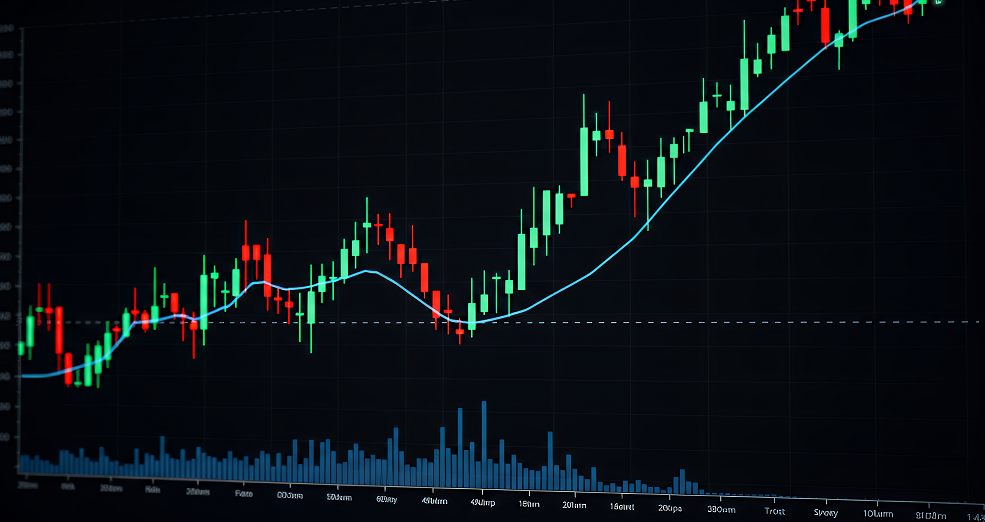IC Markets Asia Fundamental Forecast | 31 July 2025
What happened in the Asia session?
The Federal Reserve maintained its target range for the federal funds rate at 4.25%–4.50%. The decision came with a split vote, as two board members dissented in favor of a rate cut. Chair Jerome Powell stated there is no commitment to a rate cut at the next meeting, pushing back on market expectations for a September cut. The Fed cited solid labor markets and inflation remaining above its 2% target as key policy influences. Uncertainty around economic outlook persists, with the Fed emphasizing a data-dependent, meeting-by-meeting approach to future rate decisions.
U.S. and global markets are positioned defensively as the Federal Reserve reiterates its cautious path, waiting for clearer evidence before changing course on rates. Tariffs, particularly those targeting India and Russia, are in focus for their potential inflation and global supply impacts. Most impacted instruments overnight included U.S. equities (declined), Treasuries (yields up), the U.S. dollar (firmer), and gold (slightly higher on caution).
What does it mean for the Europe & US sessions?
Thursday’s Asian session is expected to be eventful with the BoJ’s policy decision, China’s PMI data releases, and the ongoing effects of slower growth and soft inflation. Traders should stay attentive for headline-driven volatility that could impact FX, equities, and rates, as well as for any surprises from central banks or Chinese macro numbers. Defensive positioning remains, but opportunities may emerge on significant data and policy surprises.
The Dollar Index (DXY)
Key news events today
Core PCE price index m/m (12:30 pm GMT)
Employment cost index q/q (12:30 pm GMT)
Unemployment claims (12:30 pm GMT)
What can we expect from DXY today?
The US Dollar Index extended its rally for a fifth straight session, climbing above 99.9 on July 30. This marks a gain of more than 3% for the month and puts the dollar at its strongest levels in over five weeks. The Federal Reserve held interest rates steady at its July 30 policy decision, as expected. However, Chair Powell’s cautious tone, emphasizing data dependence and pushing back expectations of a September rate cut, provided new tailwinds for the dollar.
Central Bank Notes:
- The Board of Governors of the Federal Reserve System voted unanimously to maintain the Federal Funds Rate in a target range of 4.25% to 4.50% at the July 29–30, 2025, meeting, keeping policy unchanged for the fifth consecutive meeting.
- The Committee reiterated its objective of achieving maximum employment and inflation at the rate of 2% over the longer run. While uncertainty around the economic outlook has diminished since earlier in the year, the Committee notes that challenges remain and continued vigilance is warranted.
- Policymakers remain highly attentive to risks on both sides of their dual mandate. The unemployment rate remains low, near 4.2%–4.5%, and labor market conditions are described as solid. However, inflation is still somewhat elevated, with the PCE price index at 2.6% and core inflation forecast at 3.1% for year-end 2025, up from earlier projections; tariff-related pressures are cited as a contributing factor.
- The Committee acknowledged that recent economic activity has expanded at a solid pace, with second-quarter annualized growth estimates near 2.4%. However, GDP growth for 2025 has been revised downward to 1.4% (from 1.7% projected in March), reflecting expectations of a slowdown in the coming quarters.
- In the revised Summary of Economic Projections, the unemployment rate is expected to average 4.5% in 2025, and headline PCE inflation is forecast at 3.0% for the year, with core PCE at 3.1%. Policymakers continue to anticipate that inflation will moderate gradually, with ongoing risks from tariffs and global conditions.
- The Committee reaffirmed its data-dependent and risk-aware approach to future policy decisions. Officials stated they are prepared to adjust the stance of monetary policy as appropriate if risks emerge that could impede progress toward the Fed’s goals.
- As previously outlined, the Committee continues the measured run-off of its securities holdings. The pace of balance sheet reduction, which slowed since April (monthly redemption cap on Treasury securities reduced from $25B to $5B, while holding agency MBS cap steady at $35B), was left unchanged this month to support orderly market functioning and financial conditions.
- The next meeting is scheduled for 16 to 17 September 2025.
Next 24 Hours Bias
Weak Bearish
Gold (XAU)
Key news events today
Core PCE price index m/m (12:30 pm GMT)
Employment cost index q/q (12:30 pm GMT)
Unemployment claims (12:30 pm GMT)
What can we expect from Gold today?
Gold remains subdued near recent lows, pressured by firmer U.S. data, strong dollar performance, and fading safe-haven demand. While long-term central bank buying and underlying inflation concerns offer some support, the near-term outlook is mildly bearish to neutral unless a significant risk event re-ignites defensive buying. Recent trade deals (U.S.–Japan, U.S.–EU) and reductions in some geopolitical tensions have lessened risk aversion, diminishing gold’s appeal as a haven. As global markets turn more risk-seeking, money flows out of defensive assets like gold.
Next 24 Hours Bias
Weak Bearish
The Australian Dollar (AUD)
Key news events today
Retail sales m/m (1:30 am GMT)
What can we expect from AUD today?
The Australian dollar is under mild to moderate pressure as of July 31, 2025, after softer inflation data pushed markets to fully price in a rate cut at the RBA’s upcoming August meeting. The bearish backdrop in both domestic and global macro drivers limits modest recovery attempts. Traders are watching for RBA policy guidance and upcoming labor market data as key determinants for near-term direction, with tariffs and global risk cues likely to add further volatility. The Reserve Bank of Australia kept its cash rate at 3.85% in July in a split (6–3) decision, but dovish inflation data has since shifted expectations. Markets are now looking for a rate cut in August, which weighs on the AUD even as the US dollar has also softened recently.
Central Bank Notes:
- The RBA held its cash rate steady at 3.85% at the July meeting on 8 July 2025, following a 25bps reduction in May and in line with widespread market expectations after recent data showed inflation tracking within the target band.
- Inflation continues to ease from its peak, with higher interest rates helping to rebalance demand and supply across the Australian economy. Data for the June quarter signalled ongoing progress, though underlying pressures persist in certain sectors.
- Trimmed mean inflation for the June quarter likely remained near 2.9% and headline CPI around 2.4%, both within the RBA’s 2–3% target range. The Board noted further evidence of inflation convergence, but flagged that not all price categories are moving in tandem.
- Financial markets have shown increased volatility in the wake of global tariff and trade policy developments—especially as a result of recent U.S. and EU announcements. This has pushed asset prices higher but contributed to an uncertain outlook for domestic growth and employment.
- Private domestic demand showed a tentative recovery. Real household incomes improved and signs of easing household financial stress emerged, but some business sectors continued to face subdued demand, limiting their ability to pass on cost increases.
- Labour market conditions remained tight overall. Employment continued to expand, with low rates of underutilisation. Business surveys suggest labour availability remains a constraint, though there are signs of a gradual easing compared to earlier in 2025.
- Underlying wage growth softened modestly, though unit labour cost growth remains elevated due to below-trend productivity gains. The Board remains attentive to developments in wage and productivity dynamics as cost pressures continue to evolve.
- Uncertainties persist for both domestic activity and inflation. Consumption growth has risen, but more slowly than anticipated three months ago, with global and domestic factors both contributing to the cautious outlook.
- There remains a risk that household spending picks up more slowly than forecast, which could result in ongoing subdued aggregate demand and a sharper deterioration in employment conditions.
- Given that inflation is expected to remain around the target band, the Board judged that it was appropriate to keep policy settings unchanged in July, maintaining a position that is still mildly restrictive.
- The Board continues to monitor all incoming data and assesses risks carefully, with a focus on global trends, domestic demand indicators, inflation outcomes, and the labour market outlook.
- The RBA remains committed to its mandate of price stability and full employment and stands ready to adjust policy as needed to achieve these objectives.
- The next meeting is on 11 to 12 August 2025.
Next 24 Hours Bias
Weak Bearish
The Kiwi Dollar (NZD)
Key news events today
No major news event
What can we expect from NZD today?
The New Zealand dollar remains under moderate pressure but found relief on July 31 amid a pause in the U.S. dollar’s rally and continued risk that favors volatility. Traders are focused on the Federal Reserve’s direction, Q2 NZ labor data, and the broader global economic outlook. Downside risks remain unless global sentiment improves or New Zealand’s upcoming data surprises strongly to the upside.
The NZD’s latest move higher is largely tied to mild U.S. dollar weakness as traders reposition for the Fed’s July 31 decision, where rates are expected to be held steady. Markets are watching closely for forward guidance on a possible rate cut in September, which could directly impact the NZD’s short-term direction.
Central Bank Notes:
- The Monetary Policy Committee (MPC) agreed to hold the Official Cash Rate (OCR) at 3.25% on 9 July, marking the first pause following six consecutive rate cuts.
- The MPC cited heightened uncertainty and near-term inflation risks as reasons to wait until August for further action.
- Although the annual consumer price index inflation increased to 2.5% in the first quarter of 2025, it remained within the MPC’s target range of 1 to 3%, noting that the outlook for medium-term inflation pressures has evolved broadly in line with the May MPS projections.
- While it is expected to be near the upper end of the band in the second and third quarters of this year, easing core inflation and spare capacity in the economy should help return it toward the 2% midpoint over time.
- The MPC noted that, despite global factors, domestic financial conditions are evolving broadly as expected, as mortgage and deposit interest rates have continued to decline, reflecting a lower OCR, strong bank liquidity, and soft credit growth.
- In aggregate, GDP growth over the December and March quarters was stronger than expected, reflecting a pick-up in household consumption and business investment, but higher frequency indicators suggest weaker-than-expected growth in April and May.
- Large economic policy shifts overseas and concerns about sovereign risk could result in additional financial market volatility and increased bond yields, while prolonged economic uncertainty might induce further precautionary behaviour by households and firms, slowing the domestic economic recovery.
- Subject to medium-term inflation pressures continuing to ease in line with the Committee’s central projections, the Committee expects to lower the OCR further, broadly consistent with the projection outlined in May.
- The next meeting is on 20 August 2025.
Next 24 Hours Bias
Weak Bearish
The Japanese Yen (JPY)
Key news events today
BOJ policy rate (2:30 am GMT)
Monetary policy statement (2:30 am GMT)
BOJ outlook report (2:30 am GMT)
BOJ press conference (6:30 am GMT)
What can we expect from JPY today?
The Japanese yen is hovering near lows ahead of the closely watched BoJ rate decision and inflation forecast. With the rate expected to stay at 0.5%, any hawkish surprise or strong upward inflation revision could prompt a rebound in the yen, while continued dovishness and trade risk would keep it under pressure. Political instability and global tariff developments also remain significant sources of potential volatility for JPY through Thursday’s session and beyond. Focus is squarely on the Bank of Japan’s (BoJ) monetary policy decision and economic forecasts due Thursday during Asia hours. Intense volatility is expected around the yen as traders react to central bank guidance and new inflation outlooks.
Central Bank Notes:
- The Policy Board of the Bank of Japan decided on 17 June, by a unanimous vote, to set the following guidelines for money market operations for the inter-meeting period:
- The Bank will encourage the uncollateralized overnight call rate to remain at around 0.5%.
- The Bank will continue its plan to reduce the amount of its monthly outright purchases of JGBs. The scheduled amount of monthly long-term government bond purchases will, in principle, be reduced by about ¥400 billion each quarter from January to March 2026, and by about ¥200 billion each quarter from April to June 2026 onward, aiming for a level of around ¥2 trillion in January to March 2027.
- Japan’s economy, while showing some weak movements in certain areas, is recovering moderately. Overseas economies, though partly exhibiting weakness due to the effects of various countries’ trade policies, are generally growing at a moderate pace. Exports and industrial production, while showing some last-minute demand due to the U.S. tariff increases, are basically moving sideways.
- On the price front, looking at the year-on-year rate of change in consumer prices (excluding fresh food), the rate is currently in the mid-3% range, reflecting continued pass-through of wage increases to sales prices, as well as the effects of past rises in import prices and recent increases in food prices such as rice. Expected inflation rates are rising moderately.
- As for consumer prices (excluding fresh food), the effects of past import price increases and recent rises in food prices such as rice, which have pushed up inflation so far, are expected to wane. During this period, the underlying rate of increase in consumer prices may stagnate somewhat due to the slowdown in growth pace.
- Looking ahead, the Japanese economy is expected to slow its growth pace, as overseas economies decelerate due to the effects of various countries’ trade policies, putting downward pressure on Japanese corporate profits, etc., although accommodative financial conditions will provide some support. Thereafter, as overseas economies return to a moderate growth path, Japan’s growth rate is expected to increase.
- As the growth rate rises, labour shortages intensify, and medium- to long-term expected inflation rates rise, inflation is expected to gradually increase. In the latter half of the projection period in the “Outlook Report,” inflation is expected to move at a level generally consistent with the “price stability target”.
- There are various risk factors, but in particular, the outlook for the development of trade policies in various countries and the resulting uncertainty regarding overseas economic and price trends is extremely high. It is necessary to closely monitor the impact on financial and foreign exchange markets, as well as on Japan’s economy and prices.
- The next meeting is scheduled for 31 July 2025.
Next 24 Hours Bias
Weak Bearish
Oil
Key news events today
No major news event
What can we expect from Oil today?
Oil rebounded strongly on July 31, underpinned by supply risks from U.S. tariff threats and Russian sanctions, robust macro data, and OPEC+ adding supply at a flexible pace. Gains were moderated by a surprise build in U.S. inventories. The market remains highly headline-driven, and short-term direction will depend on ongoing geopolitical and OPEC+ policy moves.OPEC+ began unwinding previous production cuts, adding 411,000 barrels per day in July—a third straight month of larger-than-expected output hikes. This move aims to restore previous supply and punish over-producing members, even as global inventories remain relatively low.
Next 24 Hours Bias
Weak Bullish





